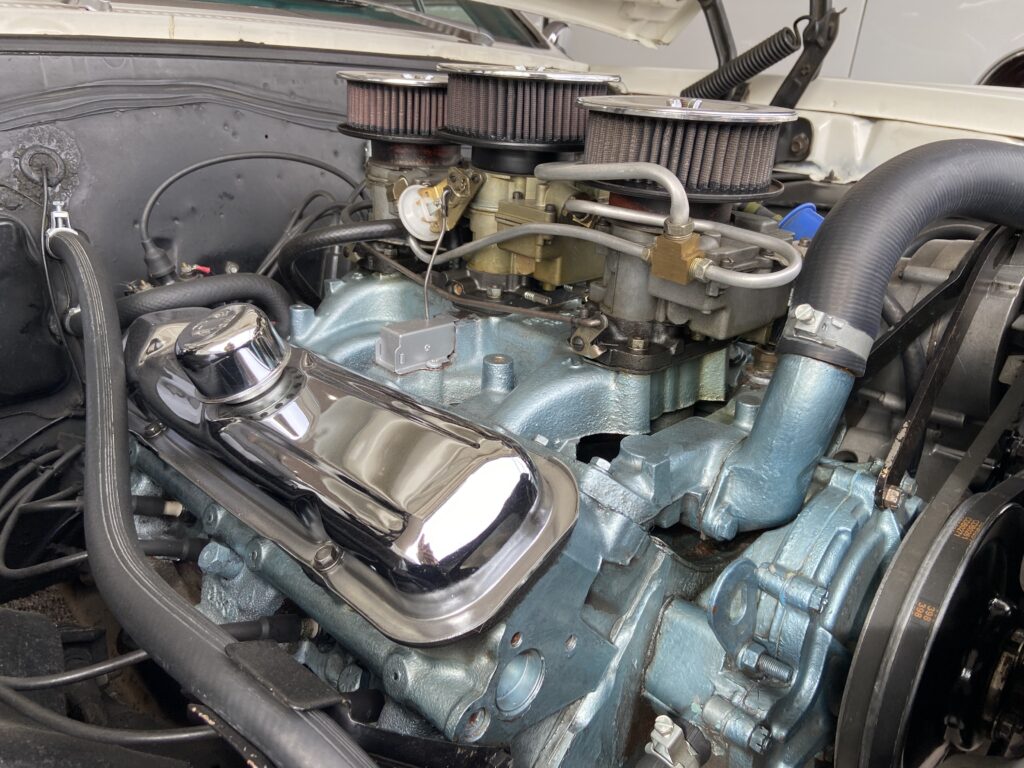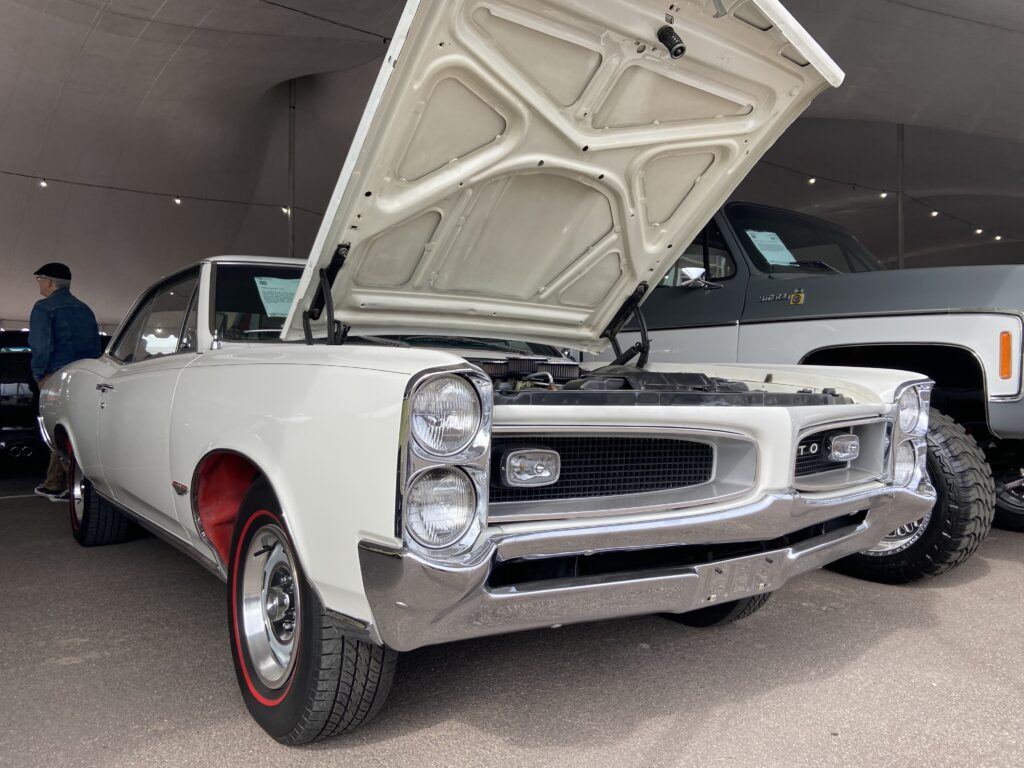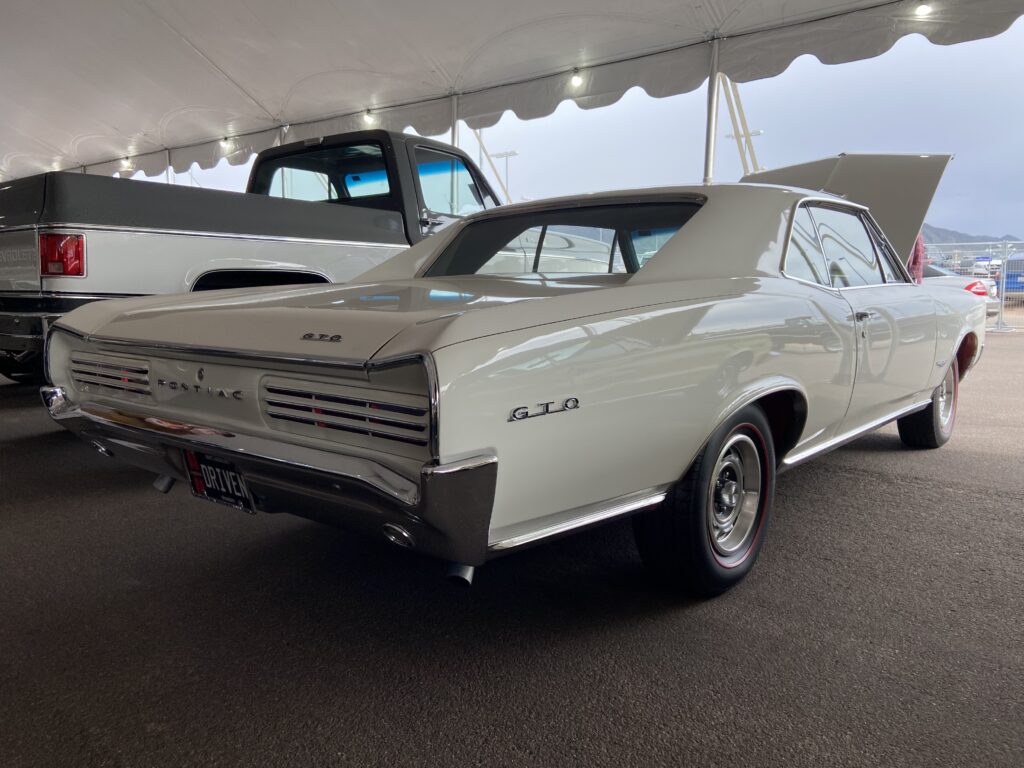
Being an Oldsmobile fanatic, I subscribe to the theory that the 1949 Rocket 88 with it’s 135hp, 303 cubic inch OHV V8 is the original muscle car. To many others the original muscle car is the Pontiac GTO, and I can’t say that I have a good reason to disagree. The formula is simple: Take a mid-sized car and stick the larger engine from the full-size car in it. Add a couple extra go fast parts and a stick shift and you’re literally off to the races.
The Pontiac GTO began life in the early 60’s as a trim model of the Pontiac LeMans/Tempest. Using a creative loophole that circumvented the rule GM had about maximum displacement in midsized cars, Pontiac utilized the 389 V8 and offered it as the GTO option. I think that the Hurst 4-speed manual and tri-power carburetor setup on the 389 is the epitome of factory muscle car, and this 1966 model is the last year you could get this pairing. It was good for a gross rating of 360hp, and that could get you to the end of the 1/4 mile in 14 seconds flat.

Speaking of options, the ’66 GTO was also the first production car with a plastic grill, and this particular model came optioned with a 3.55:1 limited slip differential as well as the “Ride and Handling” package.
The GTO peaked in 1970 with the 455HO model and performance would be downhill until the GTO was relegated to a trim package on what was a badge-engineered Chevy Nova. The X-body platform Ventura took on the GTO name in 1974. An unceremonious end to the spark that ignited the muscle craze, this model would option the car with a 3-speed manual and 200hp V8.

Pontiac would then shelve the name, reviving it decades later for the Holden Monaro imports that lasted a couple years. Say what you will about the exterior styling, even the lesser 350hp 2004 GTO would lay waste to any prior car to bear the namesake. However it only remained in production in the US market until MY2006. Pontiac itself was retired not too long after in 2010.
This particular Goat was retired from the auction block at $66,000.





 In the US market the Porsche 968 has much less notoriety than it’s other front-engine/rear-drive, water-cooled brethren. It is essentially a final hurrah to the 924/944 platform, but with an updated exterior sharing a lot of design cues from the 928.
In the US market the Porsche 968 has much less notoriety than it’s other front-engine/rear-drive, water-cooled brethren. It is essentially a final hurrah to the 924/944 platform, but with an updated exterior sharing a lot of design cues from the 928.






